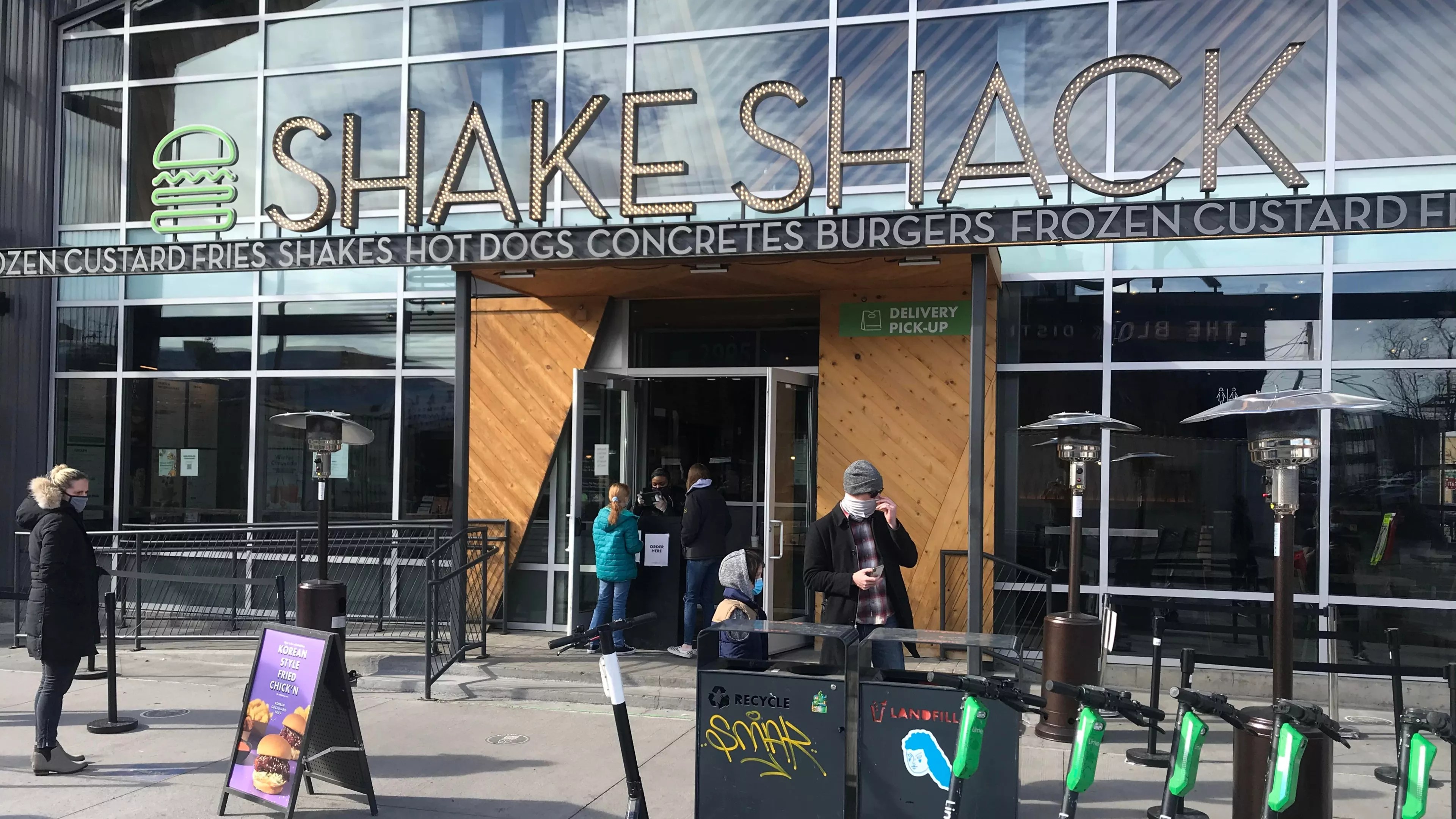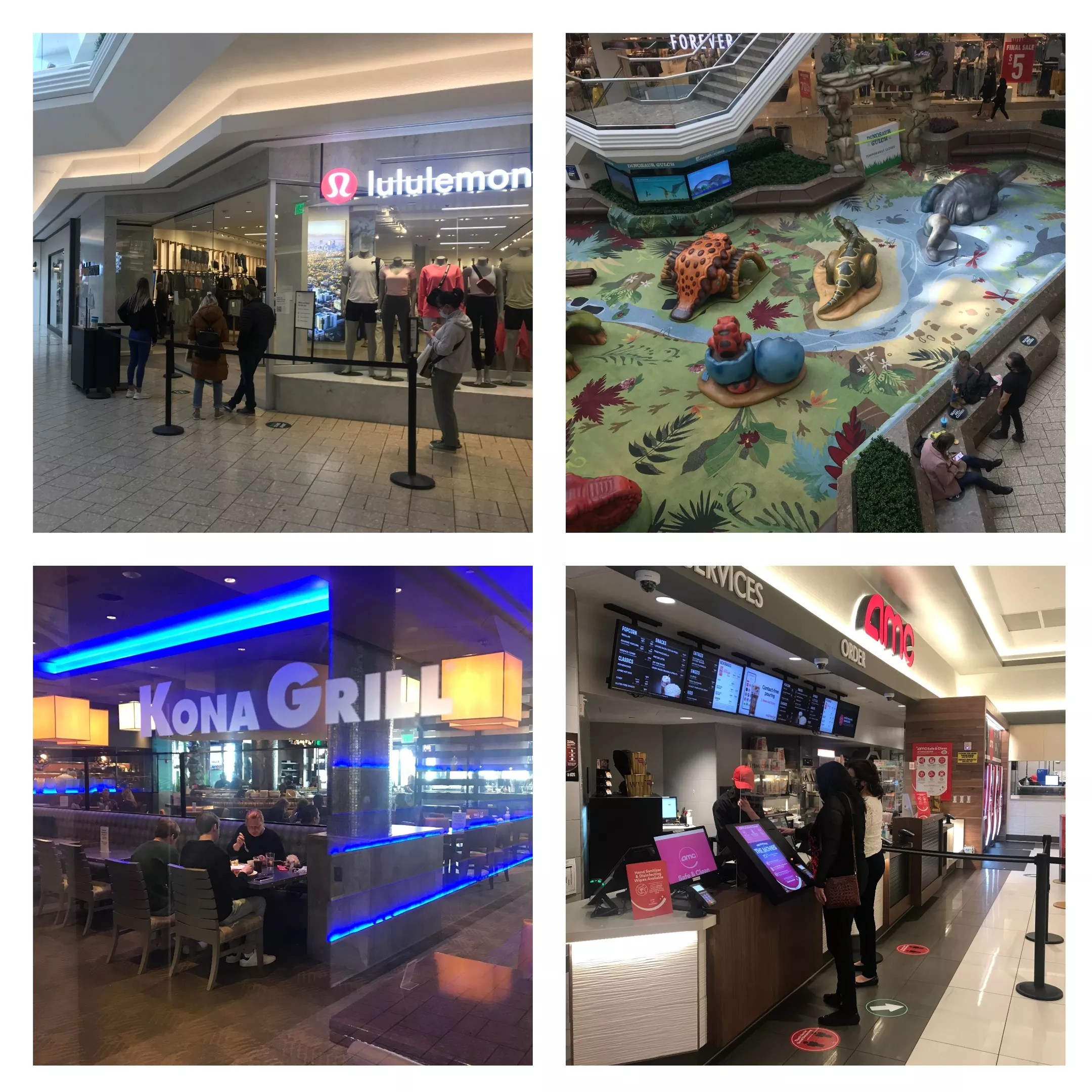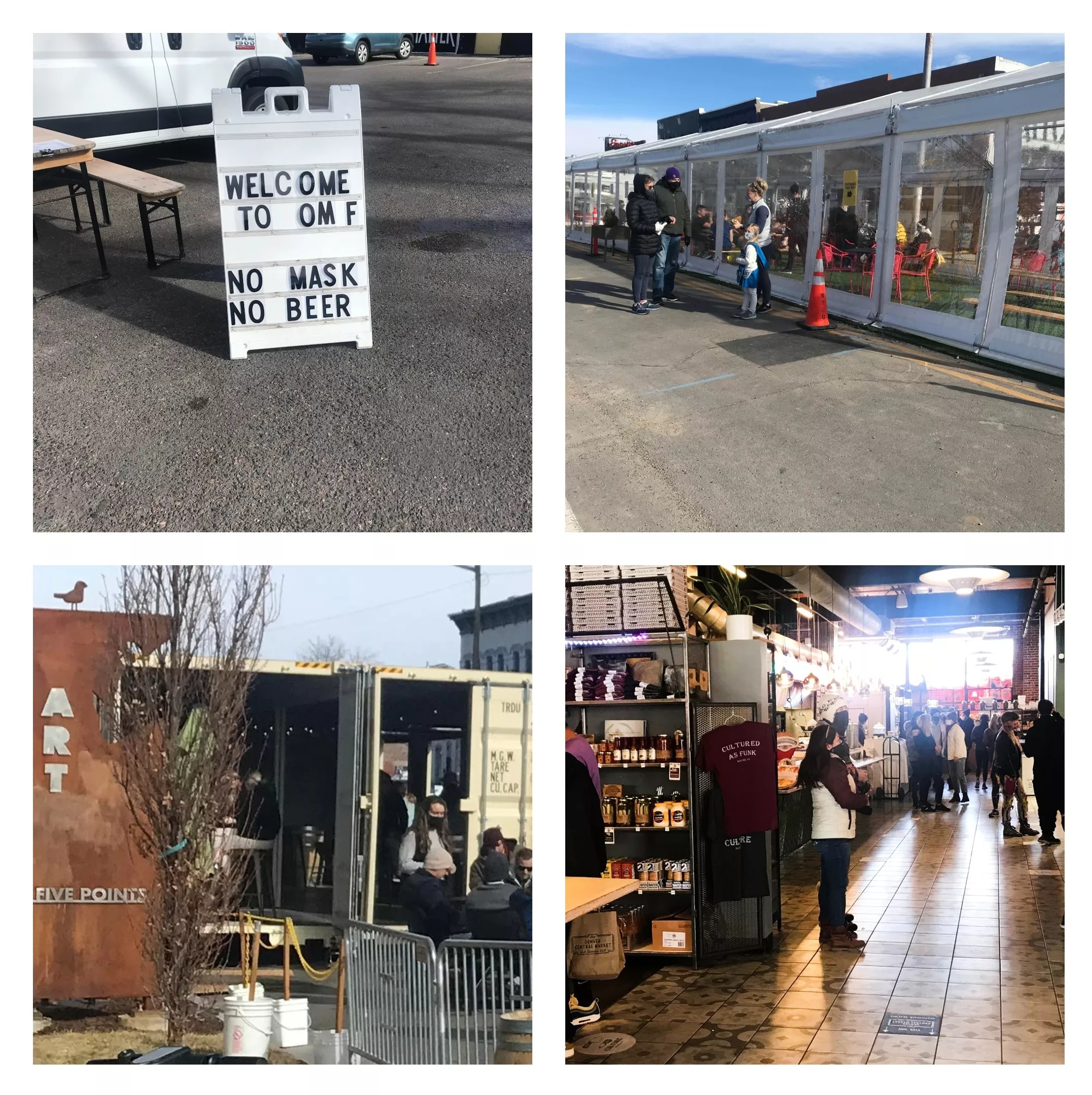
Photo by Michael Roberts

Audio By Carbonatix
During a February 5 press conference, held several days after he teased a major change in how the Colorado Department of Public Health and Environment would impose COVID-19 restrictions, Governor Jared Polis announced that counties previously at Level Orange on the state’s dial system would be moved to Level Yellow on what he referred to as Dial 2.0 at 9 a.m. on Saturday, February 6. As a result, restaurants and other businesses in metro Denver that had been limited to 25 percent capacity could double the number of people being served to 50 percent – up to 150, depending on the size of the space – in time for lunch the next day.
Among the biggest questions raised by this swift change: Would Mile High eateries and other enterprises that have been struggling to make ends meet at the lower capacity treat the announcement like an invitation to operate as if the pandemic were over (even though that’s clearly not the case)? And would customers sick of isolating flood into restaurants and stores in numbers not seen for months?
To find out, we took a tour of Denver business locations on the afternoon of February 6. Included in our stops were the Cherry Creek Shopping Center, RiNo and two trendy consumer districts: the stretch of Tennyson north of West 38th Avenue and the commercial blocks along West 32nd Avenue. And what we saw wasn’t all that different from what we might have observed in the same areas a week or two earlier, suggesting that safety protocols are fairly baked-in at this point, no matter where the city is on the CDPHE dial.
Generally speaking, no irresponsibility was on view – or at least, no more than normal.

Clockwise from upper left: A line outside Lululemon at the Cherry Creek Shopping Center on February 6; the mall’s play area remains off-limits; only two customers were buying movie tickets at the AMC theater; plenty of room at the Kona Grill.
Photos by Michael Roberts
At the Cherry Creek mall, many major outlets, including Lululemon, the Apple store and more, continued to operate as they have, following policies mandated not by the state government, but by their parent companies. This approach, which includes capacity limits strict enough to result in customers waiting their turn to browse in lines outside the entrance, showed that under the current circumstances, a lot of corporations are actually imposing stricter rules than the municipalities in which their stores are located – a surprising twist, but one that doesn’t seem likely to change no matter where a specific county lands on the CDPHE dial.
The mall’s play area remains off-limits, much to the chagrin of several children we spotted gazing longingly at the rubbery dinosaur clan concealed just out of their reach. And although the shopping center’s AMC movie multiplex was open, there was hardly a rush of folks eager to see a flick on a screen larger than the one they have at home. When we walked by, the total number of ticket buyers in the lobby topped out at two – far fewer than the number of employees available to wait on them.
The area’s restaurants, including the Kona Grill, were all sparsely populated, allowing for loads of distance between tables. While there may be plenty of people hungry to dine out, the switch from Level Orange to Level Yellow has yet to unleash that demand at the mall.

Clockwise from upper left: A sign of the times in RiNo on February 6; the tented dining area in Ratio; inside the Denver Central Market; outdoor dining on a beautiful but brisk day.
Photos by Michael Roberts
The situation was similar in RiNo. The day was a bit brisk, yes, but not nearly cold enough to prevent comfortable grazing on outdoor patios or inside tented dining areas that were still up and open throughout the neighborhood. And, of course, indoor eating was available, too. Yet there were no crowds clamoring for tables. All of the social-distancing protocols that have become familiar over the past several months remained in place, and no one we eyeballed seemed uptight about following them.
True, most people continue to believe that they can eschew masks even when they’re not eating or drinking. But that’s been the case for months, and attempts by public officials to convince them otherwise clearly haven’t succeeded. Then again, most people we saw strolling from place to place in RiNo kept their masks on, in contrast to what we’d seen in Old Town Fort Collins the previous week.
This scenario repeated itself in northwest Denver. Most restaurants along Tennyson and on West 32nd Avenue had customers, but none were anything resembling packed. We estimated that they were all under 25 percent capacity – meaning they would have still been okay under Level Orange regulations.
While no definitive conclusions could be drawn from these stops on the first day of Level Yellow rules, they suggest that the behavior of most individuals in Denver will be dictated more by how comfortable they feel on a personal level about going out than by the city’s dial position.
Color us impressed.